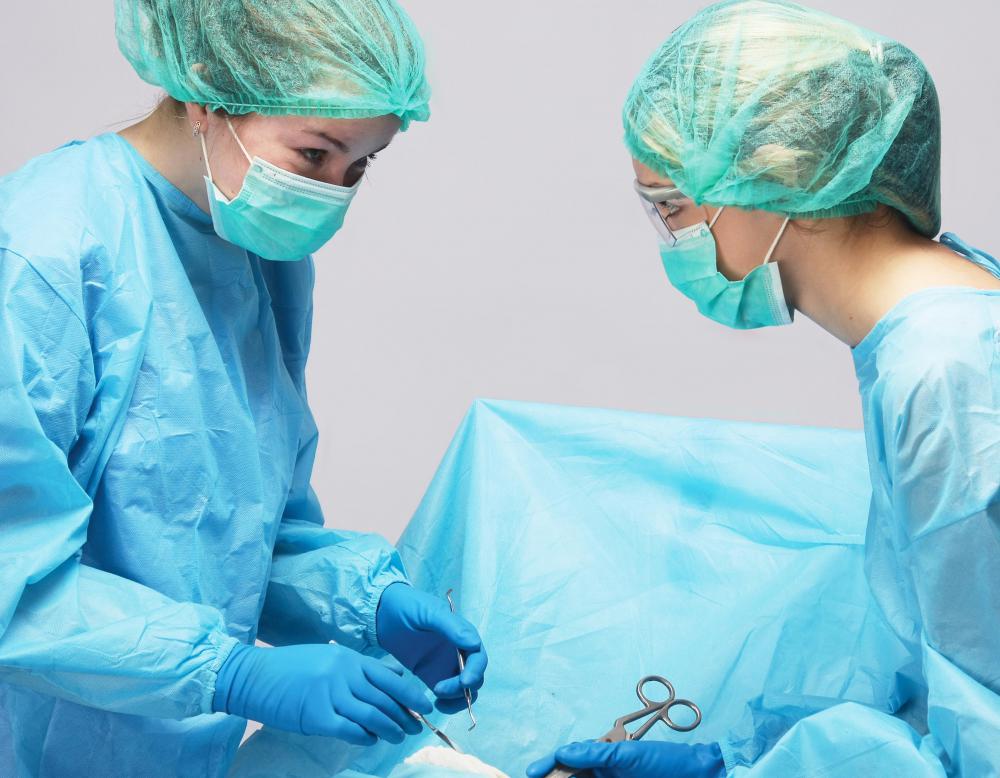At TheHealthBoard, we're committed to delivering accurate, trustworthy information. Our expert-authored content is rigorously fact-checked and sourced from credible authorities. Discover how we uphold the highest standards in providing you with reliable knowledge.
What is Fibrocartilage?
Fibrocartilage is a type of cartilage which is very rich in type I collagen, and found in areas such as the meniscus of the knee, the pubic symphysis, and the vertebral discs. This type of cartilage is especially strong and durable, so it appears in areas where these traits are needed. It can injure in the form of tearing, with surgery often being required to repair a tear of fibrocartilage or to stabilize the area where the tear occurs so that healing can take place.
This form of cartilage is characterized by the bundles of tough collagen which are clearly viewable under a microscope when it is examined. The bundles are interspersed with clefts which contain cartilage cells, and the cartilage includes a mixture of types I and II collagen, along with other components of cartilage. The bundles of collagen are part of what makes fibrocartilage so tough; while individual strands may break, others will retain their strength and supportive structure to keep the cartilage from being compromised.

Along the spine, fibrocartilage is needed to create padding between the vertebrae while also offering some protection to the spinal cord. Having a jointed spine is what allows organisms to bend, but it also creates vulnerability at each joint. Fibrocartilage supports the spine and the joints of the spine, absorbs shocks, and creates a surface for articulation so that the vertebrae can move smoothly when someone bends or twists the spine.

In the public symphysis, the cartilaginous joint which comprises part of the pubic bone, fibrocartilage holds the joint together, but it can also soften and pull apart during pregnancy to allow the expanding uterus to fit. During labor and delivery, it pulls apart even further so that the baby can get out, before firming back up again after pregnancy to stabilize the pelvis. This softening occurs in response to the release of a hormone known as relaxin.

In joints such as the knee, fibrocartilage is involved in the articulation of the joint while also protecting the joint. This type of cartilage appears in several other joints which see a lot of use and may be subjected to heavy impacts, because it is less prone to tearing and separation than other forms of cartilage. Problems with the cartilage in a joint can lead to issues such as pain and soreness in the joint, stiffness, and eventual damage to the bone as the padding of cartilage is worn away.
AS FEATURED ON:
AS FEATURED ON:















Discussion Comments
@SkyWhisperer - Save your money. There’s no scientific or medical basis to the claim that fibrous cartilage in the wrist or joint area can regenerate itself with the right supplementation.
I think these products claim to contain whale oil or something like that, which is supposed to mimic the collagen that exists in the human body.
Anyway, to date, there is no evidence that the stuff works. Maybe his pills contain pain killers and so you think it’s working, but without a before and after X-Ray, how would you really know?
@NathanG - I understand that there can be some repair of this elastic cartilage, but there seems to be no mention that this kind of cartilage can regenerate itself when worn out.
Yet I keep hearing this guy on TV push a product to combat arthritis which he says will repair cartilage. I don’t know whether to believe him or not.
I’m not a medical professional, but I’m inclined to see the idea may have some merit, since the body tries to regenerate its damaged cells on a continual basis. Do you have any thoughts?
@David09 - I’ll take the second question first, because I used to do some weight training and this type of injury was common among people who didn’t properly handle the weights.
I never had it happen personally but I knew a few of the guys in the gym who did. Fibrocartilage injury to the wrist is marked by a sharp pain that usually travels from the thumb to the pinky finger.
As to how to treat it, the best thing is ice and a wrist rest for several weeks. If that doesn’t help then you’re possibly dealing with a tear, and should see a doctor for surgery. I rarely saw those cases however.
As for carpal tunnel, let’s just say pain in the pinky finger has nothing to do with it. It’s almost exclusively in the wrist area, with perhaps some pain along the elbow as well. That’s my non-medical explanation.
I am wondering how you would diagnose fibrocartilage tear versus something like carpal tunnel syndrome, as both can take place in the wrist area? Also, would regular rest and relaxation be the best remedy or would you need something more serious like fibrocartilage surgery?
Post your comments